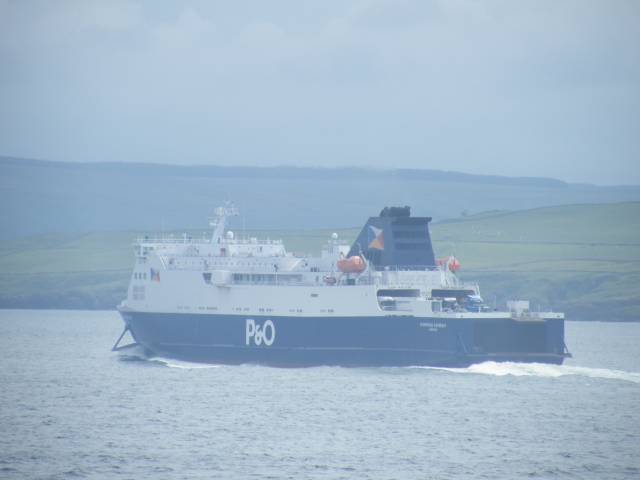#FreightVolumes - Operator P&O Ferries has announced that it handled the highest volume of freight in five years on its Larne-Cairnryan service in 2016.
The ferry and logistics company's route on the North Channel linking Northern Ireland and Scotland handled 206,700 freight units on the route during the last 12 months. This figure represents a 7.5 per cent increase on the previous year (192,200 units).
In a further indicator of the reliability of P&O Ferries' service, 2016 was the first ever year in which none of the 4,774 sailings scheduled from the port of Larne was cancelled, with 97 per cent of departures within ten minutes of their published time.
P&O Ferries operates seven sailings a day between Larne and Cairnryan in Scotland, a two hour service which is the shortest crossing of any operator on the North Channel. The regular daily service provides a bridge for goods being transported between Northern Ireland and the Republic of Ireland and Britain, and also on to the continent via its connecting services from Dover, Tilbury, Hull and Teesport.
Neal Mernock, P&O Ferries' Director responsible for the Irish Sea, said: "This highly encouraging performance shows that the economy of Northern Ireland is continuing to grow, notwithstanding the uncertainty heralded by the Brexit vote in June. We invested £500,000 last year in our two purpose built ferries on the route, the European Highlander and European Causeway, to upgrade facilities and passenger areas on the ships. This has already paid a dividend in terms of increasing customer satisfaction with our services."
"The frequency of sailings, short crossings, excellent reliability and the fact that the port is now only 30 minutes from Belfast by road via the newly built A2 are increasingly making Larne the gateway of choice for anyone exporting to or from Northern Ireland. We have seen particularly strong volumes of agricultural and dairy produce, household and stores goods, building materials and machinery."
































































